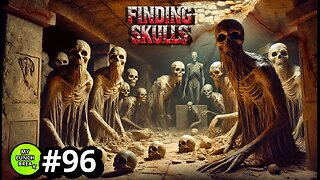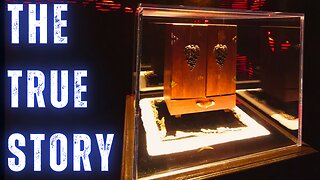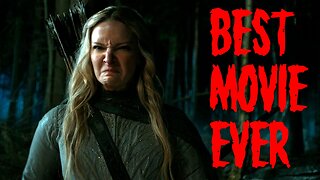The Dinosaur Paradox: Unveiling the Untold Story of Fossils, Science, and Reality
Dinosaurs. The word alone conjures vivid images of towering, ferocious beasts roaming ancient landscapes—a distant past so rich in mystery and grandeur that it’s hard to resist. From children’s museums to Hollywood blockbusters, dinosaurs have cemented themselves as both scientific icons and cultural legends. Yet, beneath the layers of scientific narrative and pop-culture spectacle lies a startling question: What if everything we’ve been told about dinosaurs isn’t as real as it seems?
What if the fossilized remains, the museum displays, and the intricate evolutionary stories are part of a much larger, more complex reality that has been carefully constructed over time? What if the dinosaur narrative is more closely tied to human ambition, the competitive nature of science, and our desire to explain our place in history than it is to the actual evidence itself?
The Museum Paradox: Why Aren’t Real Dinosaur Bones on Display?
Let’s start with a common misconception. When you walk into a museum, admiring the towering skeleton of a Tyrannosaurus Rex, the first thing you should know is that what you’re looking at is not the actual bones of an ancient beast. In most cases, the skeletons on display are replicas, crafted from plaster, fiberglass, or resin, meticulously cast from molds of the original fossils. Museums admit this openly: the real bones are often too fragile, too valuable, or too incomplete to be placed on display.
But this raises a deeper question: Why aren’t the real bones ever shown to the public? In most museums, genuine fossils are tucked away in backrooms, accessible only to paleontologists and select researchers. This closed-off access creates a bubble of authority, where only a narrow group of specialists—those whose careers are built on the existence and study of dinosaurs—are allowed to interact with the actual fossils. The average person, no matter how curious or well-intentioned, is denied the ability to independently verify these remains.
This lack of transparency feeds a crucial question: If these bones are real, why not let external, unbiased experts examine them? Why has there never been a concerted effort to allow independent researchers—be they chemists, geologists, or engineers—to conduct open, transparent analyses of these fossils? The fact that such verification is withheld from public scrutiny raises suspicion, especially in a scientific field where public belief plays such a large role in supporting the institutions involved.
The Bone Wars: The Competitive Origins of Paleontology
To fully grasp the complexities surrounding dinosaur discovery, we must travel back to one of the most competitive and controversial periods in scientific history: the Bone Wars of the late 19th century. The Bone Wars, also known as the Great Dinosaur Rush, involved two paleontologists, Edward Drinker Cope and Othniel Charles Marsh, who engaged in a bitter rivalry to unearth and name as many dinosaur fossils as possible. Their feud epitomized the darker side of scientific discovery, where ambition and ego outweighed caution and accuracy.
During this period, Cope and Marsh went to extreme lengths to outdo one another. They bribed fieldworkers, sabotaged each other’s dig sites, and often published findings prematurely, resulting in numerous errors in the identification and reconstruction of dinosaur species. Some fossils were hastily reconstructed to fit preconceived notions, while others were misclassified entirely.
This race to claim discovery often led to questionable scientific practices—including constructing entire skeletons from a single tooth, as was famously the case with some early fossils. The Bone Wars, while celebrated for their role in sparking public interest in dinosaurs, also introduced a legacy of scientific recklessness, where accuracy was sacrificed for prestige.
More importantly, the Bone Wars set the stage for the monetization of paleontology. The discoveries made during this period laid the foundation for museums, academic institutions, and fossil collectors to build lucrative careers around dinosaur fossils. This created an industry in which fossils, real or replica, became commodities. The quest for prestige and financial gain has continued to shape paleontology to this day, raising the question of whether the pursuit of truth has always been the primary goal.
Dinosaur Biomechanics: A Puzzle with Missing Pieces
Beyond the historical drama of paleontology, there is a growing body of research suggesting that the biomechanics of large dinosaurs may not be feasible under our current understanding of biology. Take the Tyrannosaurus Rex or the massive Brontosaurus—creatures that, according to popular depictions, could move, hunt, and interact with their environment with ease.
However, engineers and biophysicists have raised significant concerns about the physical plausibility of such creatures. How could a creature of such immense size move efficiently, let alone survive? Joint structures, weight distribution, and even metabolic needs present problems that are rarely discussed in mainstream paleontology. The weight and size of these animals, based on the fossil reconstructions, would put tremendous stress on their bones and joints—so much so that some researchers argue they would likely collapse under their own weight.
Moreover, the sheer metabolic demands of a creature like the Brontosaurus present another mystery. Such animals would have required an enormous caloric intake to sustain themselves, far beyond what most ecosystems could realistically provide. The issue is further compounded by the absence of modern analogs—we have no living creatures on Earth today that resemble these giants in terms of size or lifestyle, raising the question of how such creatures could have thrived in the environments of the past.
This leads to a deeper reflection: Are the reconstructions accurate at all? Could it be that our entire perception of dinosaur physiology is based on flawed assumptions, speculative guesswork, and incomplete evidence?
The Evolutionary Link: Dinosaurs and Birds—Fact or Fiction?
One of the more contentious claims in modern paleontology is the idea that dinosaurs evolved into birds. This narrative, now taught as fact in many academic circles, suggests that over millions of years, small theropod dinosaurs gradually evolved into the feathered birds we see today. The claim is based on the discovery of certain fossils that exhibit both reptilian and bird-like characteristics.
However, many researchers remain skeptical of this evolutionary link. Feathered dinosaur fossils, for example, are often incomplete, with artists and paleontologists filling in the gaps based on assumptions rather than hard evidence. The idea that a colossal predator like the T. rex shares an evolutionary lineage with modern birds like the chicken has drawn considerable criticism, particularly when considering the vast differences in anatomy, metabolism, and environmental adaptation.
Moreover, independent researchers have pointed out that the fossil record itself is fraught with inconsistencies, gaps, and instances of misclassification. Fossils once heralded as evidence of the dinosaur-bird link have, upon closer inspection, revealed misinterpretations or composite fossils—bones from different species mistakenly assembled together. One famous example is the discovery of a supposed Neanderthal hybrid, later revealed to be a human jawbone attached to the skull of an extinct ape.
Given these discrepancies, we must ask: Is the dinosaur-to-bird narrative truly based on solid evidence, or is it another speculative leap, propped up by the desire to create a seamless evolutionary story?
The Business of Dinosaur Replicas: Creating the Myth
As previously mentioned, the vast majority of dinosaur skeletons on display are replicas, crafted by private companies that specialize in building life-sized dinosaur models for museums and collectors. These replicas are often constructed with incredible detail, designed to give the illusion of authenticity while being made from synthetic materials.
This raises an important question: If most of what we see are fabrications, what impact does this have on our perception of dinosaurs? We are, in effect, experiencing a curated version of history, one built not from raw evidence but from the imagination of artists and scientists working within the constraints of incomplete fossil records.
The business of creating replicas has become so lucrative that entire industries have sprung up around the production and sale of dinosaur casts. These replicas—often built for hundreds of thousands of dollars—serve as the centerpiece for museums, whose very existence depends on drawing in crowds fascinated by these ancient creatures. The commercial aspect of paleontology is undeniable, and it raises a critical question: How much of what we see is based on genuine science, and how much is crafted for profit?
The Narrative of Control: Dinosaurs and Deep Time
Finally, we must address the role of the dinosaur narrative in shaping our understanding of Earth’s history. The timeline of dinosaurs—spanning hundreds of millions of years—reinforces the idea that Earth itself is ancient, that life has undergone countless evolutionary cycles, and that humanity is but a fleeting chapter in a much larger story.
This view, while widely accepted, serves as the foundation for modern scientific cosmology. It aligns with the theories of evolution and deep time, concepts that stretch the history of the universe across unfathomable epochs. But by accepting this view uncritically, we also close ourselves off to alternative explanations for Earth’s past—explanations that may challenge the prevailing scientific dogma.
Dinosaurs, in this sense, are not just creatures from the past. They are symbols—symbols of a cosmic narrative that suggests life is shaped by random, impersonal forces over immense stretches of time. This view fosters a worldview in which humans are insignificant, and where the mysteries of the past are locked away in the corridors of academia, beyond the reach of everyday people.
Conclusion: Rewriting the Dinosaur Story
The dinosaur narrative, when examined through the lens of critical inquiry, reveals a story that is far more complex and multifaceted than the simple, accepted version we often encounter in textbooks and museums. This story is not just about fossils or prehistoric creatures, but about powerful myths, cultural symbols, and narrative control. It is about how science, history, and human ambition intertwine to create a collective vision of the past that shapes our understanding of the present—and, crucially, the future.
Challenging the Accepted Version
At the heart of this inquiry lies a fundamental question: How much of what we “know” about dinosaurs is based on direct evidence, and how much is speculative construction? From the Bone Wars of the 19th century, where egos and ambition led to rushed discoveries and misinterpretations, to the modern-day dinosaur replica industry, which profits from creating meticulously detailed—but ultimately artificial—skeletons, the dinosaur story is one built on layers of assumption, competition, and economic interests.
What’s more, restricted access to real fossils, coupled with the self-reinforcing nature of paleontology, raises concerns about the transparency and validity of the narratives we’re being told. The fact that only a small group of specialists are allowed to study the most precious fossils leaves the door open for unchecked authority in the field—a situation that limits independent verification and public accountability.
The Evolutionary and Biomechanical Enigma
When we move beyond the surface-level fascination with dinosaur skeletons and dig deeper into the biomechanics of these massive creatures, we encounter troubling inconsistencies. Engineers and biophysicists continue to raise questions about the plausibility of some of the largest dinosaurs, suggesting that their reconstructed forms might not have been physically viable in Earth’s ancient environments. The sheer size and weight of creatures like the Brontosaurus or Tyrannosaurus Rex challenge our understanding of biological structures, leading to a growing skepticism about whether these creatures, as we imagine them, could have existed at all.
Moreover, the evolutionary narrative that connects dinosaurs to modern birds—while widely accepted—contains its own gaps and contradictions. Fossils that supposedly provide evidence for this transition are often incomplete or based on speculative reconstructions, leaving room for alternative interpretations. In the broader context of scientific history, this narrative may be less about evidence and more about reinforcing a cohesive worldview that aligns with the theories of deep time and cosmic evolution.
The Role of Dinosaurs in the Modern Mythos
To understand why the dinosaur narrative has gained such a strong foothold in contemporary culture, we must consider its role within the larger framework of scientific cosmology. Dinosaurs, as symbols, represent a prehistoric age that stretches back millions of years, grounding the idea that Earth’s history is one of long, slow, and impersonal processes. This view, which supports the concept of deep time, aligns with the scientific model of a universe shaped by random, natural forces.
But this view also serves to promote a particular kind of worldview—one that emphasizes human insignificance in the grand scheme of things. By placing humanity in a narrative where we are merely a brief blip in an endless cosmic timeline, we are encouraged to see ourselves as disconnected from the larger forces that shaped the world. Dinosaurs, in this sense, reinforce a story that suggests life on Earth is fleeting and fragile, subject to extinction and upheaval at any moment.
This narrative is not just about science. It’s about cultural power. By controlling the way we view the past—by promoting a specific version of Earth’s history, where dinosaurs reign as the ultimate example of nature’s impermanence—institutions of science and education help to shape our collective imagination. This reinforces a worldview that aligns with the dominant cosmological models of our time.
A Call for Transparency and Open Inquiry
None of this is to say that dinosaurs never existed or that the fossil record is a complete fabrication. But it is to suggest that the dinosaur narrative—like many accepted stories in science—deserves a deeper level of critical scrutiny. Science should always be open to independent verification and transparency. The bones that have captivated the world for over a century should not be locked away in museum backrooms, accessible only to a select few. If dinosaurs are as central to our understanding of Earth’s history as we’ve been told, then the evidence should be freely available for independent analysis by unbiased researchers across disciplines.
Likewise, the biomechanical mysteries of these creatures should not be dismissed or overlooked in favor of maintaining a seamless narrative. If the physical structure of these massive animals raises questions about their viability, then those questions should be addressed openly, without fear of challenging the orthodoxy.
Rewriting the Dinosaur Story: A New Perspective
Perhaps the greatest lesson to be learned from examining the dinosaur paradox is that the stories we tell about the past are always shaped by the values and assumptions of the present. Dinosaurs, as cultural symbols, serve as a bridge between the ancient past and the modern imagination. They represent the tension between what we think we know and what remains unknown—between the certainty of scientific consensus and the possibility of alternative perspectives.
By rewriting the dinosaur story, we invite a broader, more inclusive dialogue about the nature of history, science, and reality itself. We open the door to new interpretations, allowing for a richer understanding of Earth’s past that doesn’t rely solely on the narrow interpretations of a single discipline.
Ultimately, the dinosaurs may teach us less about the prehistoric world and more about how humanity constructs knowledge—and how that knowledge, once constructed, can become a powerful tool for shaping the way we view our world, our place in time, and our relationship to the cosmos.
In conclusion, the dinosaur narrative is both a scientific marvel and a cultural myth, intertwined with the ambitions, errors, and assumptions of those who uncovered and interpreted their remains. To move forward, we must engage with the story critically, opening our minds to the possibility that there is more to discover—not just about these ancient creatures, but about the entire framework of understanding that surrounds them. In doing so, we may find that the greatest mystery of all is not the dinosaurs themselves, but the way we, as humans, choose to remember and retell their story.
-
 0:13
0:13
FragmentsOfTruth
2 days agoDecoding Unwavering Loyalty: Advanced Insights into Donald Trump’s Political Influence
1281 -
 LIVE
LIVE
Right Side Broadcasting Network
2 days agoLIVE REPLAY: President Trump Holds a Rally in Latrobe, PA - 10/19/24
10,516 watching -
 29:59
29:59
MYLUNCHBREAK CHANNEL PAGE
20 hours agoThe Old World, Under Our Feet?
110K62 -
 52:56
52:56
TheTapeLibrary
21 hours ago $59.31 earnedThe Most Haunted Object in the World | The Terrifying True Story of the Dybbuk Box
100K13 -
 30:45
30:45
World Nomac
17 hours ago$500 First Class on Amtrak's 28 Hour Texas to Chicago Route 🇺🇸
74.7K29 -
 1:59:33
1:59:33
Mally_Mouse
12 hours agoLet's Hang!!
89.7K9 -
 4:36:34
4:36:34
GamerGril
12 hours agoLFD! LOOKING FOR AN ABSTRACT DADDY! 😉 | SILENT HILL 2
72.4K5 -
 5:25
5:25
BuddyBrown
2 days agoThe "Disastrous" FOX NEWS Interview! | Buddy Brown
93.6K86 -
 2:34:31
2:34:31
Jewels Jones Live ®
1 day agoTRUMP DERANGEMENT SYNDROME | A Political Rendezvous - Ep. 96
103K49 -
 11:29
11:29
Space Ice
16 hours agoRings Of Power Season 2 Pt. 1 - You Owe Amazon An Apology - Best Movie Ever
109K36